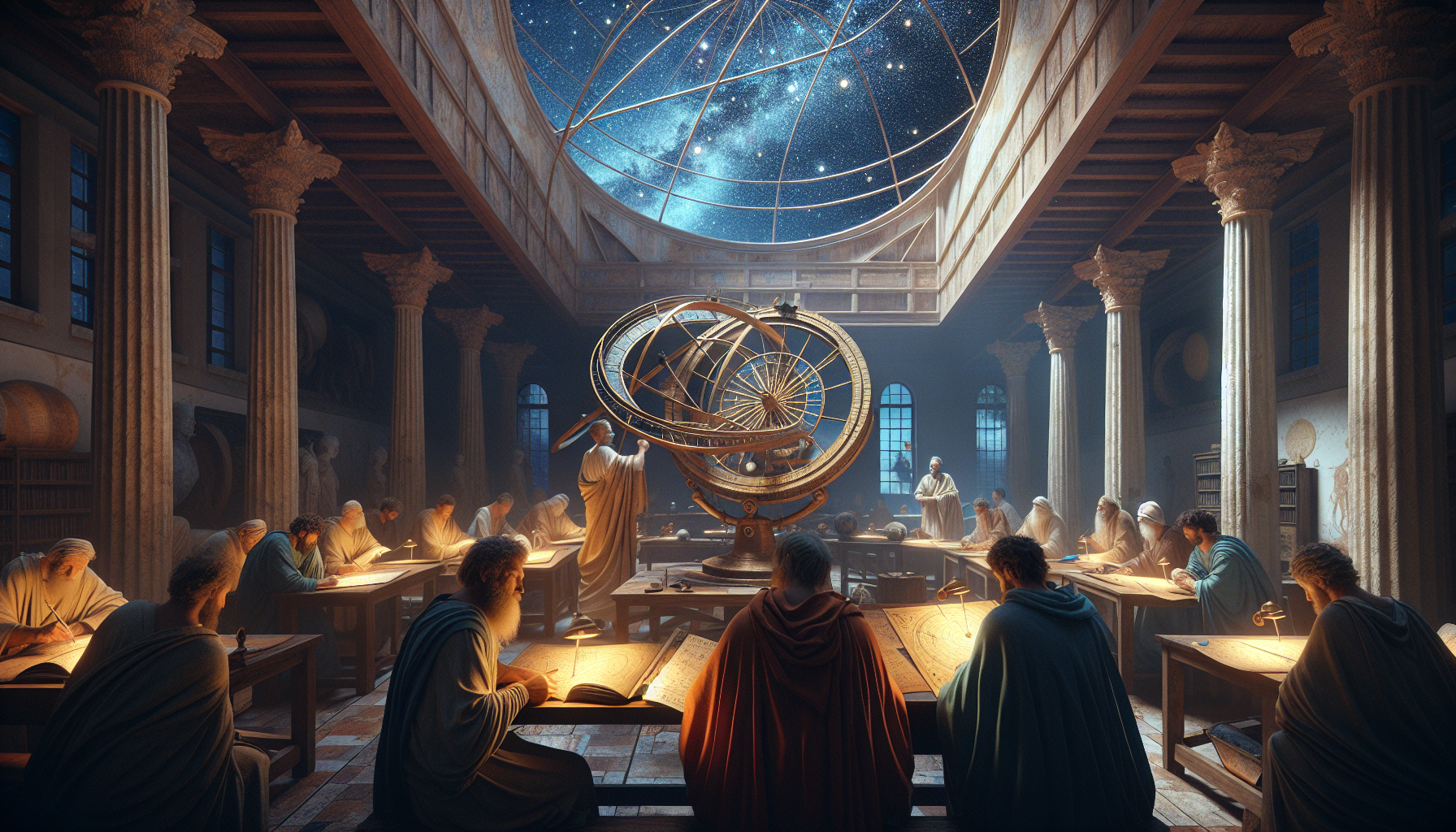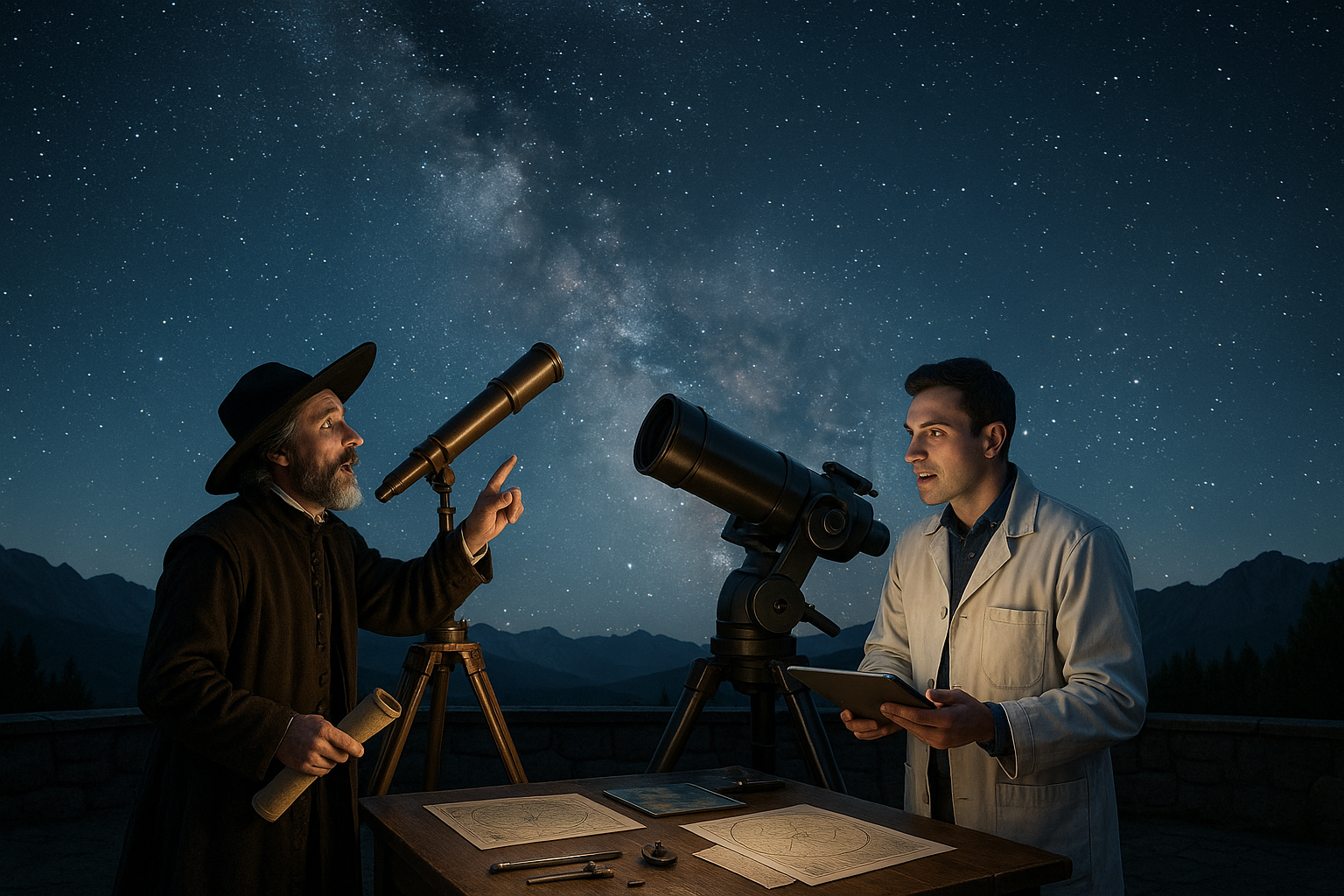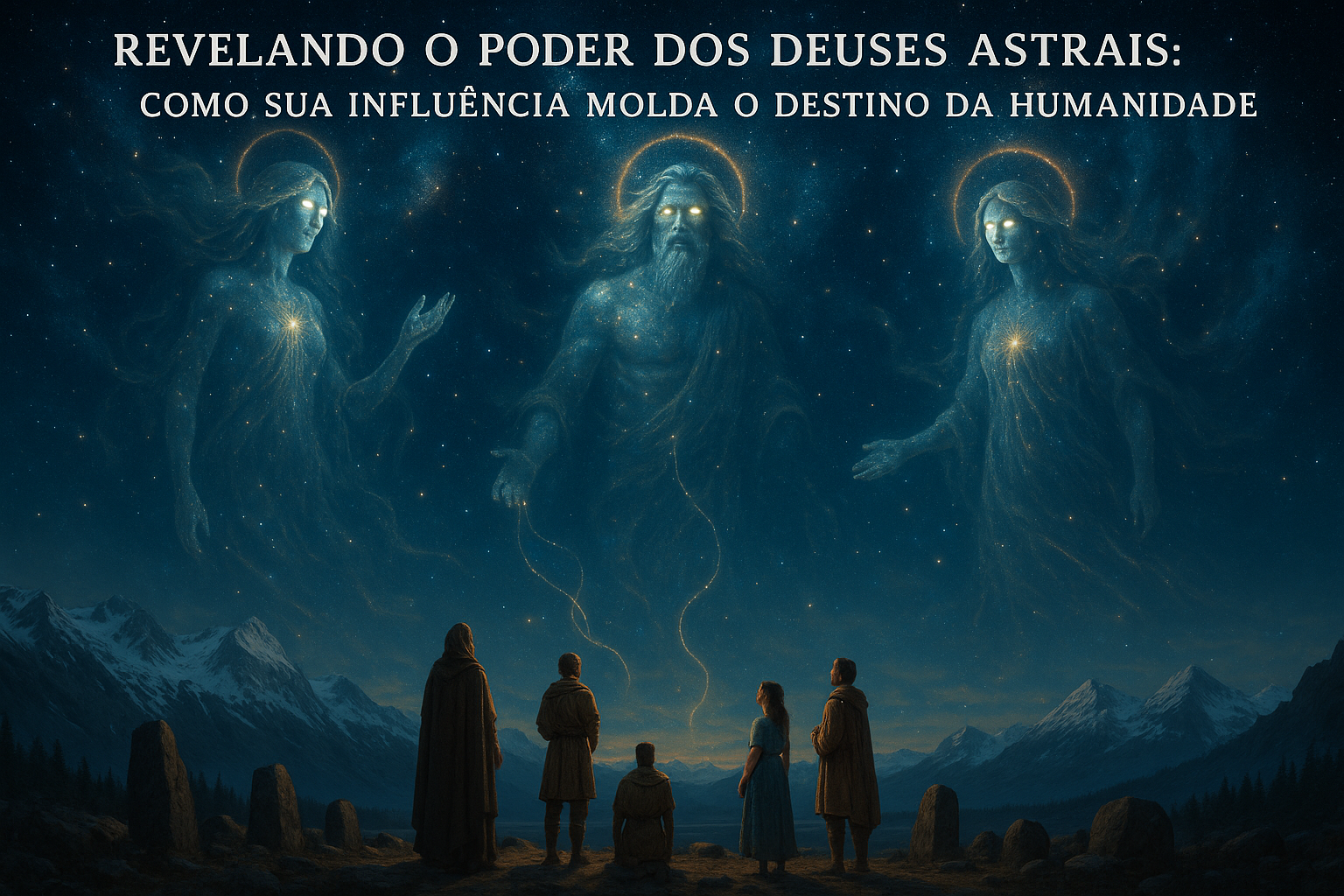In a world where our gaze is often anchored to the screens of our digital devices, it’s fascinating to pause and cast our eyes upward, just as our ancestors once did, to the vast expanse of the night sky. The cosmos has always beckoned with its twinkling mysteries and celestial choreography, capturing the imaginations of curious minds across millennia. 🌌 Long before the advent of modern technology and contemporary educational systems, ancient civilizations looked to the stars not only for guidance and navigation but as a foundational element of their educational frameworks. In this article, we embark on an enlightening journey through time, exploring how ancient education systems harnessed the power of astronomy to illuminate the minds of students and shape their understanding of the world.
The Ancient World: Where Astronomy and Education Intertwined
The cosmos has always intrigued humanity, serving as both a mystery and a source of enlightenment. In the ancient world, civilizations like the Egyptians, Greeks, and Babylonians embraced astronomy not just as a means to understand the universe but also as a crucial part of education. These societies recognized that observing the stars and planets could illuminate minds, offering insights into both the cosmos and life on Earth. This integration of astronomy into education was not merely academic; it was philosophical, spiritual, and practical. It provided answers to existential questions and practical guidance for agricultural and navigational purposes.
In ancient Egypt, for example, astronomy was vital for the construction of their monumental structures. The alignment of the pyramids and temples with celestial bodies was a testament to their advanced understanding of the stars. The Egyptians used a lunar calendar to organize their society, demonstrating the practical application of their astronomical knowledge. This deep connection between astronomy and daily life underscored the importance of celestial studies in the educational systems of the time.
The Greeks, on the other hand, approached astronomy with a more philosophical lens. Philosophers like Aristotle and Plato incorporated celestial observations into their teachings about the nature of reality. Pythagoras, for instance, viewed the cosmos as a harmonious system, reflecting the mathematical order of the universe. This blend of science and philosophy shaped Greek education, encouraging students to think critically about their place in the universe and their connection to it. The Greeks’ emphasis on logical reasoning and empirical observation laid the groundwork for modern scientific inquiry.
Educational Practices in Ancient Civilizations
Education in ancient civilizations was not a homogeneous experience; it varied significantly across regions and cultures. However, a common thread was the emphasis on astronomy as a core discipline. This focus was due to its perceived ability to broaden understanding and foster critical thinking. In Babylon, for instance, schools were closely tied to religious institutions, where priests taught students about the heavens. The Babylonians were meticulous observers of the night sky, recording celestial events like eclipses and planetary movements with remarkable accuracy.
Their records became foundational texts for later astronomers, illustrating the importance of accurate data collection and analysis. These educational practices emphasized the practical applications of astronomy, such as predicting seasonal changes and improving agricultural yields. The Babylonian approach was methodical and data-driven, highlighting the importance of observation and record-keeping in scientific education.
Similarly, in ancient China, astronomy was integral to education and governance. The Chinese developed a sophisticated understanding of celestial phenomena, using astronomy to create calendars and guide agricultural activities. Education in China was closely linked to the civil service exams, which required knowledge of astronomy to ensure successful governance. This connection between astronomy and statecraft underscored the importance of celestial knowledge in maintaining social order and stability. By integrating astronomy into education, ancient Chinese society fostered a culture that valued intellectual rigor and practical application.
The Influence of Astronomy on Ancient Philosophies
The philosophical implications of astronomy in ancient education cannot be overstated. For many ancient philosophers, the study of the cosmos was a means to explore deeper questions about existence, morality, and the nature of reality. In India, for example, Vedic teachings incorporated astronomy into their philosophical frameworks, viewing celestial bodies as manifestations of divine order. This perspective encouraged students to contemplate the interconnectedness of the universe and their role within it.
Ancient Indian texts like the Surya Siddhanta offered detailed astronomical observations and calculations, reflecting the advanced state of astronomical knowledge. These teachings were integral to the educational curriculum, encouraging students to see beyond the material world and consider the spiritual dimensions of existence. The integration of astronomy and philosophy in ancient India fostered a holistic understanding of the universe, blending scientific inquiry with spiritual exploration.
Similarly, in the Islamic Golden Age, scholars like Al-Farabi and Avicenna embraced astronomy as a means to explore philosophical questions. The translation of Greek and Indian astronomical texts into Arabic facilitated a cross-cultural exchange of ideas, enriching the educational landscape of the time. Islamic scholars used astronomy to develop complex models of the cosmos, reflecting their belief in the rational order of the universe. This intellectual curiosity and openness to diverse perspectives were hallmarks of the educational systems in the Islamic world, demonstrating the transformative power of astronomy in shaping philosophical thought.
Practical Applications of Astronomy in Ancient Education
While the philosophical implications of astronomy were profound, its practical applications were equally significant in ancient education. For many civilizations, understanding the movements of celestial bodies was crucial for agriculture, navigation, and timekeeping. This practical knowledge was embedded in the educational systems, ensuring that students could apply astronomical principles to solve real-world problems.
In ancient Mesopotamia, for example, farmers relied on astronomical observations to predict the flooding of the Tigris and Euphrates rivers, which was essential for successful agriculture. The educational curriculum included lessons on celestial navigation, enabling students to understand the relationship between the stars and the changing seasons. This knowledge was vital for ensuring food security and economic stability, highlighting the importance of astronomy in daily life.
Similarly, the Polynesians used celestial navigation to explore the vast expanse of the Pacific Ocean. Their educational systems emphasized the importance of understanding the stars, teaching students to navigate by the constellations and ocean currents. This knowledge allowed the Polynesians to undertake long voyages across open waters, demonstrating the practical applications of astronomy in exploration and trade. The ability to navigate by the stars was a testament to the advanced state of Polynesian astronomical knowledge, reflecting the integral role of celestial studies in their educational systems.
| Civilization | Key Astronomical Contribution | Educational Focus |
|---|---|---|
| Egypt | Lunar Calendar | Construction and Alignment of Structures |
| Greece | Philosophical Astronomy | Critical Thinking and Logic |
| Babylon | Eclipse Predictions | Data Collection and Analysis |
| China | Celestial Calendars | Statecraft and Governance |
As you can see from the table above, each ancient civilization had its unique approach to incorporating astronomy into education. These contributions not only advanced scientific knowledge but also enriched the intellectual and cultural landscapes of their respective societies.
Continuing the Legacy: Astronomy’s Impact on Modern Education
The legacy of ancient education systems and their emphasis on astronomy continues to influence modern educational practices. Today, the study of astronomy is a fundamental part of science education, fostering curiosity and a sense of wonder about the universe. The interdisciplinary nature of astronomy, which combines elements of physics, mathematics, and philosophy, makes it an ideal subject for developing critical thinking and problem-solving skills.
Modern educational programs often include astronomy as a way to inspire students and encourage them to pursue careers in science and technology. Initiatives like NASA’s educational outreach programs and the development of planetariums and observatories worldwide aim to make astronomy accessible to students of all ages. These efforts reflect the enduring appeal of the cosmos and its ability to captivate the human imagination.
- Explore online courses in astronomy to expand your knowledge.
- Visit a local planetarium to experience the wonders of the universe firsthand.
- Join an astronomy club to connect with like-minded enthusiasts and learn from experts.
For a deeper understanding of the impact of ancient education on modern practices, watch the video linked below. It provides a comprehensive overview of how ancient civilizations shaped the way we study the stars today.
The Legacy of Ancient Astronomy – Educational Influence (Cosmic Educators Channel)

Conclusion
Unlocking the mysteries of the cosmos has been a pursuit that has fascinated humanity since time immemorial. In our exploration of how ancient education systems embraced astronomy, we’ve journeyed through a rich tapestry of history that reveals the profound impact of celestial studies on the minds of students. The legacy of astronomy in ancient education is not only a testament to the intellectual curiosity of our ancestors but also a reminder of how these early scientific endeavors continue to shape our understanding of the universe today.
Throughout this article, we’ve delved into several key points. First, we explored how ancient civilizations, such as the Babylonians, Egyptians, Greeks, and Mayans, incorporated astronomy into their educational frameworks. These societies recognized the importance of the stars and celestial events in daily life, agriculture, navigation, and religious practices. The meticulous observation and recording of celestial phenomena allowed these cultures to develop sophisticated calendars, predict eclipses, and navigate vast oceans with remarkable precision.
We also examined the role of prominent figures in the ancient world who championed astronomical studies. Notably, philosophers and scholars like Pythagoras, Plato, and Aristotle integrated astronomy into their philosophical teachings, highlighting the interconnectedness of the cosmos and human existence. Their work laid the groundwork for future generations, influencing the likes of Copernicus, Galileo, and Kepler, who would go on to revolutionize our understanding of the universe.
In addition, we considered the methods and tools used by ancient astronomers. From simple yet effective tools like sundials and astrolabes to the architectural marvels of observatories such as Stonehenge and the Pyramids of Giza, these innovations underscore the ingenuity and resourcefulness of our ancestors. Their ability to construct complex models of the heavens without the aid of modern technology is a testament to their dedication and intellectual prowess.
Importantly, we reflected on the educational philosophies that underpinned these ancient teachings. Astronomy was not merely a subject to be studied in isolation; it was integrated into a holistic education that encompassed mathematics, philosophy, and the arts. This interdisciplinary approach fostered a deep appreciation for the universe and cultivated critical thinking, problem-solving, and observational skills among students. Such an educational model has enduring relevance, offering valuable lessons for contemporary educational practices.
In reinforcing the importance of this topic, it’s crucial to acknowledge the lasting legacy of ancient astronomical education. As we continue to explore the universe through advanced technology and scientific inquiry, we stand on the shoulders of those early pioneers who first gazed at the stars with wonder and curiosity. Their insights continue to inspire us to question, explore, and expand our understanding of the cosmos.
The exploration of astronomy in ancient education not only illuminates the past but also inspires future generations to seek knowledge beyond the confines of our planet. It encourages us to remain curious, to ask questions, and to pursue knowledge with the same fervor as those who came before us. By embracing the spirit of inquiry that defined ancient astronomical studies, we can foster a more informed and enlightened society that appreciates the wonders of the universe.
As we conclude, I invite you, dear reader, to reflect on the profound insights gained from understanding how ancient education systems harnessed the power of astronomy. Consider how these lessons can be applied in today’s world, whether through educational reform, personal growth, or simply a renewed appreciation for the stars above. 🌟
Feel free to share your thoughts, experiences, or additional insights in the comments section below. Engage with fellow readers to expand the conversation, and don’t hesitate to share this article with others who might find it inspiring or enlightening. By spreading knowledge and fostering dialogue, we can continue to unlock the mysteries of the cosmos and illuminate minds for generations to come.
For further reading, you might find these resources valuable:
1. National Geographic: “Ancient Astronomy: From the Babylonians to Galileo” (www.nationalgeographic.com)
2. NASA’s History Division: “The Role of Astronomy in Ancient Civilizations” (www.history.nasa.gov)
3. The British Museum: “Celestial Navigation and Ancient Astronomy” (www.britishmuseum.org)
Let’s keep looking up and learning from the stars! ✨
Toni Santos is a visual storyteller and cosmic interpreter whose work illuminates the ancient skywatchers and their prehistoric astronomy—the profound ways early humans observed and revered the heavens before written history. Through a visionary lens, Toni explores how the stars, planets, and celestial cycles shaped myth, ritual, and survival in cultures lost to time.
Rooted in a fascination with archaic observatories, stone alignments, and celestial symbolism, Toni’s creative journey reveals the deep human impulse to understand and harmonize with the cosmos. From lunar phases guiding planting seasons to the sacred paths of the Milky Way, each of his works embodies the awe and knowledge encoded in the night sky.
Combining artistic craftsmanship with archaeological insight, Toni’s pieces evoke the mystery and precision of prehistoric astronomers. His work does more than depict—it channels the timeless dance between earth and sky, bridging ancient wisdom with contemporary wonder.
As the visionary behind Vizovex, Toni shares curated visuals, essays, and symbolic studies that invite others to reconnect with the cosmic heritage written in stone and starlight. His creations are a call to look upward, to listen to the silent stories told by the stars, and to honor the first astronomers who mapped the heavens with reverence and ingenuity.
His work is a tribute to:
The celestial wisdom of prehistoric peoples
The sacred geometry of ancient observatories
The enduring bond between human culture and the cosmos
Whether you’re a stargazer, a scholar of ancient mysteries, or someone captivated by the universe’s earliest storytellers, Toni welcomes you to journey through a space where the sky is both map and myth—one constellation, one ritual, one revelation at a time.




